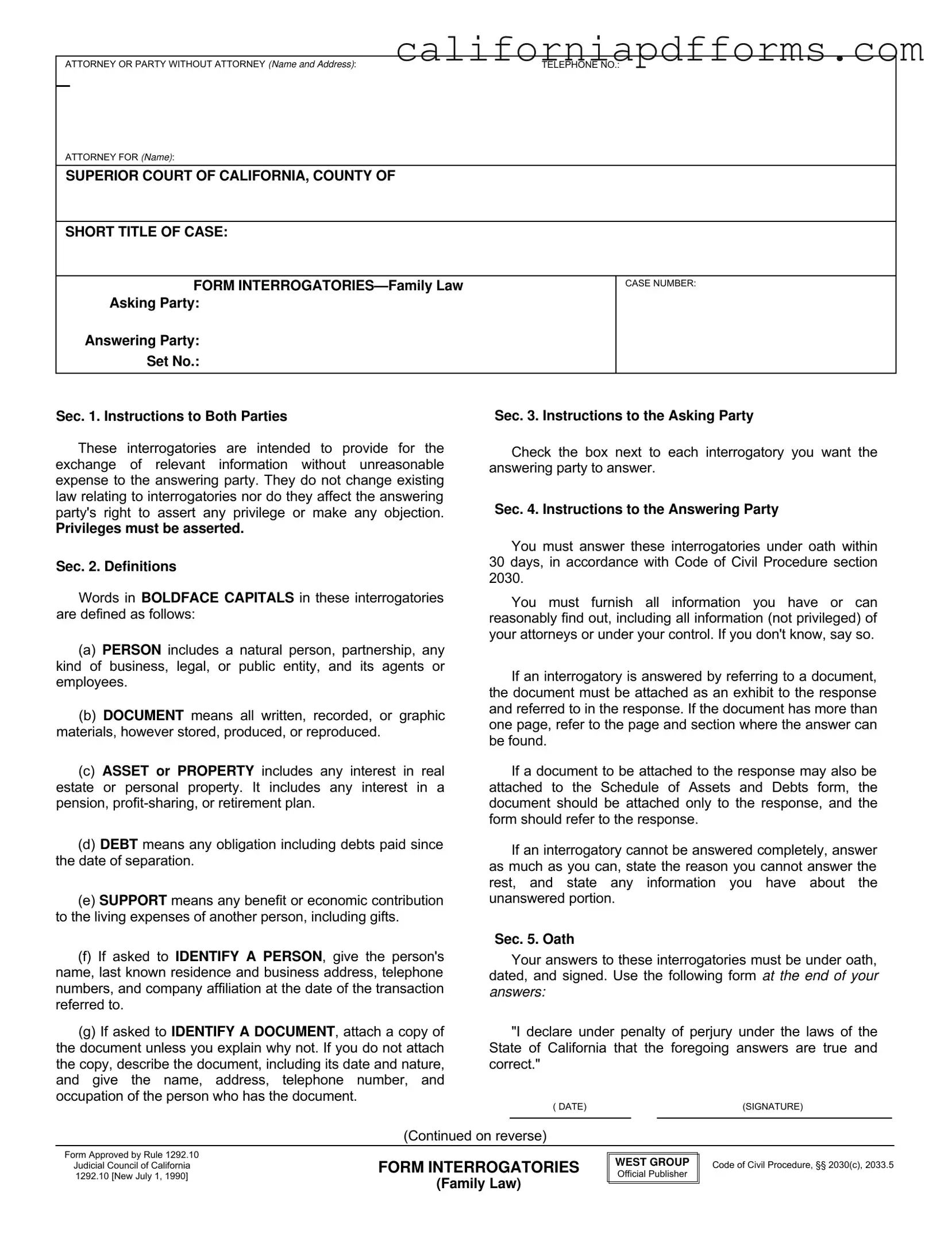The California 1292 10 form is used for family law cases to facilitate the exchange of important information between parties. It helps ensure that both sides provide relevant details about assets, debts, and support without incurring excessive costs. The form includes a series of questions, known as interrogatories, that each party must answer under oath.
Both parties involved in a family law case must complete the California 1292 10 form. The asking party initiates the process by selecting the interrogatories they want the answering party to respond to. The answering party is then required to provide their answers within a specified timeframe.
How long do I have to respond to the interrogatories?
The answering party must respond to the interrogatories within 30 days. This timeline is in accordance with California's Code of Civil Procedure. It is crucial to adhere to this deadline to avoid potential legal consequences.
What should I do if I cannot answer a question completely?
If you are unable to fully answer an interrogatory, provide as much information as you can. Explain why you cannot complete the answer and include any information you do have about the unanswered portion. It is important to be honest and thorough in your response.
What happens if I fail to respond to the interrogatories?
Failure to respond to the interrogatories can lead to serious consequences, including potential sanctions from the court. The asking party may file a motion to compel your response, which could result in additional legal costs and penalties.
Yes, you have the right to assert any privileges that apply to your situation. If certain information is protected, you should clearly state this in your response. It is important to identify any privileges to avoid disclosing sensitive information.
You should attach any relevant documents that support your answers to the interrogatories. For example, if you refer to a specific document in your responses, include a copy of that document. If the document is lengthy, specify the page and section where the relevant information can be found.
